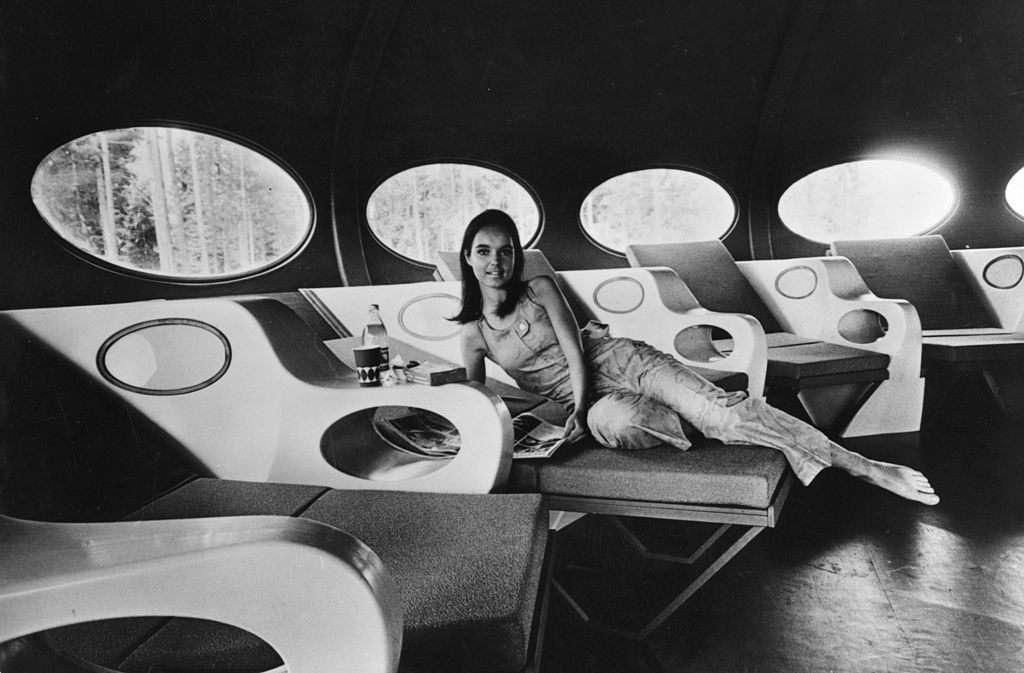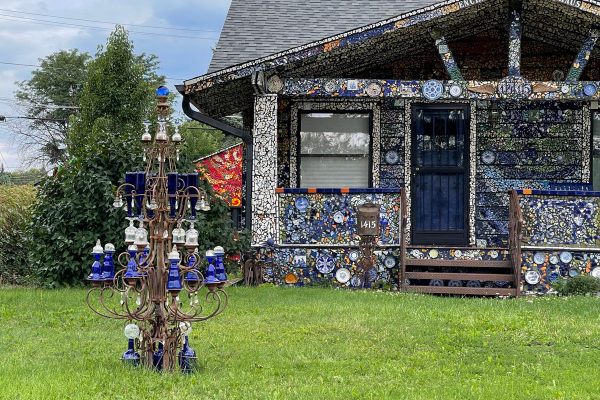A Map of the Last Remaining Flying Saucer Homes
All the 1960s Futuro Houses left in the world.
Futuro at the WeeGee Exhibition Centre in Espoo, Finland. (Photo: J-P Kärnä/CC BY-SA 3.0)

The Futuro House, in all its space age retro splendor, is like a physical manifestation of 1960s optimism. Shaped like the Hollywood idea of a flying saucer, the Futuro is a plastic, prefabricated, portable vacation home built to easily adapt to any climate or terrain, from mountain slopes to the seaside. After enjoying a heyday in the late ’60s and early ’70s, the remaining Futuros are now scattered across all parts of the globe, from the Australian beaches to the mountains of Russia, like secluded relics of midcentury technoutopianism.
The Futuro was a product of its times: when Finnish architect Matti Suuronen designed the little alien-looking abodes in 1968, the postwar economic boom was in full swing, time-saving home gadgets promised a leisure-filled vision of the future, and society was transfixed by the Space Race. Spaceship architecture was in vogue, but nothing hit the nail on the head quite like these UFO houses. Ironically, that may be what ultimately led to the Futuro’s failure.

A woman reclines in the living room of a modern portable house called ‘Futuro’, 1969. (Photo: Keystone/Stringer/Getty Images)
The portable structure was originally conceived as a ski cabin (at least one Futuro is still operating as such), but the experimental design was soon hyped as the home of the future. It includes a hatch entrance in place of a door, which opens into a common space that featured six plastic lounge chairs encircling a fireplace, plus a small kitchen, bathroom and bedroom. (There are some great photos of the early prefabs here and here.) The ellipsoid is comprised of 16 individual parts that are bolted together, or sometimes were airlifted in place fully assembled by helicopter—a sight that would surely have helped reinforce the UFO connotation.
Outer Banks Futuro House
FRISCO, NORTH CAROLINA

Futuro House in Frisco, North Carolina. (Photo: Elizabeth/CC BY 2.0)
The trouble was, these spaceship structures stood out like a sore thumb in the rural wilderness for which they were built. There was immediate backlash after the first UFO houses went up: some U.S. towns banned Futuros outright; other Futuros were destroyed or vandalized. Then in 1973 the oil crisis hit and drove the cost of plastic way up, putting the final nail in the Futuro House’s coffin. Fewer than 100 Futuros were erected before they were taken off the market by the mid-1970s.
Today—as far as anyone knows—there are roughly 60 Futuro Houses still kicking around. Thanks to a renewed, nostalgic interest in the space-age homes, some have been preserved and put on display, including the very first edition, cabin number 001, which you can tour at the WeeGee Exhibition Centre outside Helsinki. The more ill-fated Futuros, however, were left abandoned and now sit in various states of ruin around the world.
Abandoned Futuro House in Texas
ROYSE CITY, TEXAS

(Photo: Atlas Obscura User Doddmelcher)
Many of the remaining bubble homes have been tracked down and catalogued by the wonderfully thorough website thefuturohouse.com, which keeps meticulous tabs on the whereabouts and status of the homes. There are also lists of existing Futuros at Google Sightseeing, futuro-house.net, and ArchInform.
And now, to aid you in your retrofuture dream vacation, below is a map of every known Futuro House left in the world. You can check out thefuturohouse.com for more details on any of these unusual pods. Note that there may be others lurking out there (“I want to believe”) that have yet to be discovered. If you know of any Futuros we left off the map, let us know by adding it to the Atlas!























Follow us on Twitter to get the latest on the world's hidden wonders.
Like us on Facebook to get the latest on the world's hidden wonders.
Follow us on Twitter Like us on Facebook